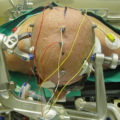Five Common Misdiagnoses in Neurology
Diagnostic errors are a major concern of both patients and physicians. In a recent survey, more than one half of patients said they were very concerned about being diagnosed properly when they see a physician in an outpatient setting. In addition, physicians consistently report encountering diagnostic errors. Moreover, compared with all safety concerns inherent to patient care, physicians worry that diagnostic errors are most likely to cause serious harm or death.
Misdiagnosis in patients with neurologic symptoms may result in ineffective and potentially toxic treatment. For example, misdiagnosis of multiple sclerosis (MS) subjects patients to the adverse effects of agents with no chance of benefit. Misdiagnosis of epilepsy exposes patients to the risks of antiepileptic drugs, as well as loss of a driving license and perhaps even their job. In addition, misdiagnosis fails to address symptom, delays appropriate therapy, and may engender a worse prognosis. Finally, misdiagnosis results in unnecessary dollar costs to patients and the healthcare system.
In this article, five common misdiagnoses in neurology are discussed. The following patient scenarios are not ranked in any order of importance, frequency, or potential harm.
Multiple Sclerosis (MS)
Misdiagnosis of MS is common. In a recent study based on input from neurologists at four academic centers, the most common diagnoses mistaken for MS were migraine with or without other diagnoses (22%), fibromyalgia (15%), nonspecific or nonlocalizing neurologic symptoms with abnormal MRI (12%), conversion or psychogenic disorders (11%), and neuromyelitis optica spectrum disorder (6%). Misdiagnosis resulted in inappropriate treatment for MS with disease-modifying therapy (70%) and even inclusion in an MS research study (4%).
Overreliance on MRI abnormalities in patients with nonspecific neurologic symptoms was one of the leading factors contributing to misdiagnosis. Diabetes, high cholesterol, hypertension, migraine, and smoking, as well as demyelinating disease, may cause T2 hyperintensities on MRI.
MS is a clinical diagnosis that relies on history, symptoms, physical findings, and specific radiographic criteria. An update on the role of MRI in the diagnosis of MS was recently published. Diagnosis of MS can be difficult. In the study by Solomon and colleagues, 24% of the misdiagnoses were made by MS specialists. If there is any uncertainty, patients should be referred to an MS center.
Misdiagnosis of epilepsy
Misdiagnosis of epilepsy is common. In one retrospective study of patients referred to an epilepsy center, nearly 25% had received a misdiagnosis. The most common conditions mistaken for epilepsy are syncope and nonepileptic seizures. Other causes, such as migraine, sleep disorders, and paroxysmal movement disorders, may also be mistaken for epilepsy.
Benign syncopal event is one of the most common reasons for misdiagnosis of epilepsy. For example, “little seizures” during a neurologic examination are often diagnosed as partial seizures, instead of motor tics.
The main reasons for misdiagnosis of epilepsy are an incomplete history and overinterpretation of the EEG. Multiple normal variants, as well as electrode artifacts, may be mistaken for epileptic discharges. In a retrospective study of patients with nonepileptic seizures initially misdiagnosed as epilepsy, benign variants, such as wicket spikes, hypnagogic hypersynchrony, hyperventilation-induced slowing, and normal variations of background alpha activity, were misinterpreted as epileptic.
A misread EEG may be the sole reason for the misdiagnosis of epilepsy. Because EEGs are often “over read,” it has been recommended that all EEGs be interpreted by a specialist in EEG.
Bell Palsy
It is no surprise that Bell palsy is sometimes confused with stroke. Public awareness campaigns, such as the National Stroke Association’s Act FAST (face, arms, speech, and time), highlight facial droop and dysarthria as reasons to rush a patient to the hospital for treatment with tissue plasminogen activator (tPA). Bell palsy is characterized by unilateral facial droop that, if severe enough, may cause difficulty speaking.
However, facial weakness from Bell palsy is due to lower motor neuron dysfunction, whereas facial weakness from a stroke usually stems from upper motor neuron impairment. (In rare cases, a brainstem stroke may cause lower motor neuron involvement.) Paralysis of the forehead muscles suggests lower motor neuron weakness and Bell palsy, whereas preservation of the forehead muscles reflects an upper motor neuron lesion and a stroke. In addition, most strokes that cause facial weakness have other symptoms and signs, such as arm numbness or weakness on the same side.
The time-dependent nature of successful stroke treatment with tPA puts pressure on clinicians to arrive at a rapid diagnosis and predisposes to diagnostic errors. If the clinician takes the time to do a thorough examination, the correct diagnosis of Bell palsy is often made.
Late-Life Depression
Late-life depression associated with cognitive impairment is often termed “pseudodementia.” It may be difficult to distinguish from early dementia due to neurodegenerative disease. Social isolation and chronic physical illness are risk factors for depression. Late-life depression is also a risk factor for dementia. To further complicate matters, neurodegenerative disorders, such as Alzheimer disease, increase the risk for depressive symptoms.
Major depression occurs in more than 10% of patients with Alzheimer disease, and even more often in patients with Lewy body and vascular dementia. Because late-life depression and dementia are common, patients may have both syndromes simultaneously. Differentiating major depression from depression secondary to dementia is challenging but can be facilitated by clinical context, neurologic examination, neuroimaging, and neuropsychological testing.
The Many Faces of Migraine
The most frequent misdiagnosis made in patients with migraine is sinusitis. Autonomic features of migraine may result in tearing or rhinorrhea, causing confusion with sinusitis. Contrary to popular belief, headaches are rarely caused by sinusitis. Sinusitis on CT or MRI is a common finding, and is often clinically irrelevant. However, purulent nasal discharge suggests sinusitis. Inappropriate medical and surgical treatment for sinusitis may delay migraine diagnosis and result in the development of medication overuse headache. Accurate diagnosis of migraine is important because there are proven medications for both prophylactic and abortive therapy.
Clinical characteristics that differentiate migraine from other headache types, including rhinosinusitis, are listed in the comprehensive International Classification of Headache Disorders. A careful history is usually all that is needed to properly classify a patient’s headache. However, in the case of worsening headache or change in character of the usual headache pattern, imaging may still be necessary.




Leave a Reply
Want to join the discussion?Feel free to contribute!